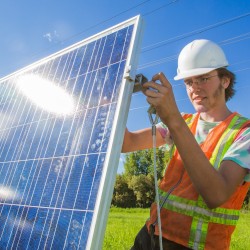Projects

Have an idea about how to make UAF more sustainable? Since 2010 the Student Sustainability
Board (formerly called the RISE Board) has selected over 90 projects for funding.
The majority of these have been written by students. Projects are funded with the
Green Revolving Fund, which was established by the student board in 2016.
Individuals that would like to pursue funding are strongly encouraged to make an appointment with the Sustainability Coordinator first.
Individuals that would like to pursue funding are strongly encouraged to make an appointment with the Sustainability Coordinator first.
The Green Revolving Fund (GRF) was established by the RISE board in 2016 as
a way of capturing savings created by sustainability projects and using them to fund
more. How it works in a nutshell:
1) RISE seeded the fund back when enrollment was higher and the Student Sustainability Fee was matched by the administration (budget cuts ended the match in fall 2016). If funds are leftover after ongoing programs are funded the group may choose to send them into the GRF.
2) The Student Sustainability Board solicits project proposals from the student body & departments. Any department project (written by staff or faculty) MUST benefit UAF students. This is done 1 – 3 times per year, depending on how much funding is available.
3) The Student Sustainability Board selects projects for funding in two areas, category A and category B (see below for details).
4) 80% of these projects are loans and pay back into the fund over the next few years.
Category A Projects 80% of the total dollar amount funded MUST be projects that have a measurable cost savings (like installing LED lighting). Each year 90% of those cost savings are transferred back into the fund until 120% of the original loan has been paid back. Recapturing some cost savings ensures there will be funds for student sustainability projects for years to come.
Example: A lighting project is funded at $1,000. After installation, the more efficient lighting saves UAF $200 per year. UAF keeps $20 of cost savings and transfers $180 back into the GRF annually for the next 6.7 years, until $1200 has been paid back. After the loan is paid back they are able to keep all of the cost savings each year.
Category B Projects The remaining 20% of the total dollar amount of funded projects can be awards that are not paid back. Examples include projects like the UAF Community Garden, short-term educational campaigns, and a recycled art show.
1) RISE seeded the fund back when enrollment was higher and the Student Sustainability Fee was matched by the administration (budget cuts ended the match in fall 2016). If funds are leftover after ongoing programs are funded the group may choose to send them into the GRF.
2) The Student Sustainability Board solicits project proposals from the student body & departments. Any department project (written by staff or faculty) MUST benefit UAF students. This is done 1 – 3 times per year, depending on how much funding is available.
3) The Student Sustainability Board selects projects for funding in two areas, category A and category B (see below for details).
4) 80% of these projects are loans and pay back into the fund over the next few years.
Category A Projects 80% of the total dollar amount funded MUST be projects that have a measurable cost savings (like installing LED lighting). Each year 90% of those cost savings are transferred back into the fund until 120% of the original loan has been paid back. Recapturing some cost savings ensures there will be funds for student sustainability projects for years to come.
Example: A lighting project is funded at $1,000. After installation, the more efficient lighting saves UAF $200 per year. UAF keeps $20 of cost savings and transfers $180 back into the GRF annually for the next 6.7 years, until $1200 has been paid back. After the loan is paid back they are able to keep all of the cost savings each year.
Category B Projects The remaining 20% of the total dollar amount of funded projects can be awards that are not paid back. Examples include projects like the UAF Community Garden, short-term educational campaigns, and a recycled art show.


